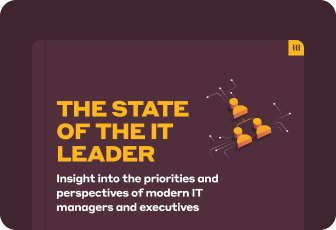Global payroll refers to the process of managing and distributing employee compensation across multiple countries, while complying with diverse local tax laws and regulations. This umbrella term encompasses a wide range of processes, from coordinating payroll operations like calculating wages, withholding taxes, and distributing payslips to handling diverse currencies, tax systems, and employment laws worldwide.
Global vs. local payroll
- Global payroll: Managing employee compensation across multiple countries, addressing the complexities of various tax laws, employment regulations, and currencies.
- Local payroll: Processing payroll within a single country, adhering to its specific legal and regulatory requirements.
While local payroll is simpler due to uniform regulations and currency, global payroll requires a more sophisticated approach to maintain compliance and accuracy across borders and different legal jurisdictions.
How does global payroll work?
When managing global payroll, the goal is the same as with local payroll: to make sure employees are paid accurately and on time. International payroll processing is just a bit more complicated since it requires collecting and consolidating data from various locations, applying the relevant local tax laws, and making payments in different currencies.
Here’s an overview of global payroll processing steps:
- Data collection and consolidation: You collect employee information, time and attendance data, compile performance-related bonuses and commissions, and standardize data formats for consistency across locations and worker types.
- Compliance research: You ensure the company is adhering to labor and any other applicable laws in each country (like GDPR in the EU, for example).
- Payroll calculation: You apply country-specific tax rates and deductions, account for benefits and allowances, and adjust for exchange rates if paying in local currencies.
- Review and approval: You conduct internal audits to ensure the accuracy of calculations and get approval from the finance or HR department.
- Payment processing: You prepare payments in the required format and initiate fund transfers through appropriate banking channels.
- Reporting: You generate payslips, distribute them to employees, and prepare reports for internal stakeholders, keeping documentation for tax authorities and other regulatory bodies.
After these payroll-specific steps, you may need to respond to any employee queries and resolve potential issues in payment processing, update your records and systems for the next payroll cycle, and occasionally (quarterly, for instance) analyze payroll data for trends and potential optimizations.
Challenges of global payroll
Managing a global workforce can present unique challenges for businesses to tackle when setting up and implementing their payroll operations. A few of the most pressing challenges are below.
Tax regulations
Navigating the diverse tax regulations of multiple countries is one of the biggest challenges in global payroll. Non-compliance with local tax laws, including social security contributions, can result in significant penalties and legal issues. It’s up to businesses to stay informed about the tax obligations in each country where they operate to ensure proper compliance.
Employment laws
Each country has its own set of labor laws and local laws that govern employment practices, including payroll. These can vary significantly, and businesses are required to understand and comply with all of them to avoid legal issues. Failure to adhere to local employment laws can lead to fines, litigation, and damage to your company’s reputation.
International payments and currency conversions
Handling international payments and currency conversions is another major challenge in multi-country payroll. Paying employees in their local currency—especially if you employ a workforce across many different countries—requires a system that can manage exchange rates and transaction fees. Businesses also need to be prepared to handle cross-border payments, which have different rules and requirements that can vary by region.
Data security
Protecting payroll data is critical, especially when dealing with a global workforce. Businesses around the world must comply with data protection regulations, such as the GDPR, to safeguard sensitive employee information.
Handling global payroll: 4 ways
Managing global employment can be complex and challenging. Businesses typically handle global payroll operations in one of four ways: setting up a local entity, using an employer of record (EOR), using PEO services, or hiring global contractors. Each method has its own advantages and disadvantages, depending on your company's needs and resources.
1. Setting up a local entity
If you want to handle global payroll in-house as part of your global expansion into a new country, you’ll likely need to set up a legal entity in that jurisdiction. This could be a subsidiary, branch, or another type of legal entity. The process for setting up a legal business entity varies depending on the jurisdiction—in some countries, it’s straightforward, while in others, it’s time-consuming and involves many regulatory hoops to jump through.
While this approach gives your company the most control to directly manage local hiring, compliance, and payroll processes, outsourcing payroll to a local service provider is still an option even once you’ve established a local presence.
Pros and cons of setting up a local entity
Pros of setting up a local entity
Cons of setting up a local entity
Full control over payroll and other operations.
Time-consuming and expensive to set up and maintain a legal entity.
Ability to build and maintain company culture in the new market.
Requires extensive knowledge of local laws, regulations, and payroll practices.
Potential long-term cost savings if the business plans significant and sustained growth in the region.
High administrative burden and resource-intensive.
2. Using an employer of record (EOR)
An employer of record (EOR) is a third-party organization that handles many of the administrative aspects of employment for companies in foreign markets. This often includes onboarding, payroll, employee benefits, compliance, and more. An EOR acts as the legal employer on behalf of the company, allowing businesses to expand globally without setting up a local entity.
Pros and cons of EORs
Pros of using an EOR
Cons of using an EOR
Simplifies global expansion by outsourcing complex HR and payroll tasks.
Higher long-term costs compared to managing payroll in-house.
Streamlines compliance with local employment laws and regulations.
Less control over payroll operations and other HR functions the EOR manages.
Reduces administrative burden, allowing your company to focus on core business activities.
Potential dependency on the EOR for compliance and employee relations.
Provides a partnership with local expertise.
3. Using a professional employer organization (PEO)
A professional employer organization (PEO) specializes in handling administrative HR functions, such as payroll and compliance, benefits administration, and general HR management. Similarly to EORs, but with a focus on US employees, these organizations allow businesses to outsource HR admin through co-employment and use their time to focus on more strategic tasks related to their workforce, like headcount or succession planning. When using PEO services, you co-employ your workers with this organization for admin services, but you still have full control over who you hire, what kind of compensation you offer, and what their scopes of work and schedules look like.
Pros and cons of hiring through a PEO
Pros of hiring through a PEO
Cons of hiring through a PEO
Access to better employee benefits.
Less flexibility as PEOs usually have standardized policies.
A smoother HR experience.
Potential misalignment between the PEO and your company culture.
Reduced workforce management costs.
Potential conflict of interest when a PEO is managing clients other than you.
Maintained payroll tax compliance.
Less time spent on repetitive HR admin.
4. Hiring global contractors
Hiring global contractors allows companies to expand their global team without establishing a legal presence in each country. Contractors are not international employees—they’re typically hired on a project basis, and businesses often benefit from the flexibility and cost savings associated with this model.
Pros and cons of hiring global contractors
Pros of hiring global contractors
Cons of hiring global contractors
Flexible and cost-effective way to engage international workers.
Potential compliance risks related to misclassification of employees as contractors.
Simplifies payroll operations by avoiding the need for local entity setup.
Limited control over contractors compared to full-time employees.
Allows companies to quickly scale up or down based on project needs.
May face challenges in building a cohesive company culture with a dispersed workforce.
When do you need a global payroll provider?
If your company is growing (internationally), but you’re still unsure whether you need to hire a global payroll provider, here are a few signs to look out for:
- Your business is expanding its operations to new countries, so managing payroll compliance and processes across new jurisdictions has become complex and challenging.
- You’re hiring new employees and contractors in multiple locations at a fast pace.
- You lack in-house knowledge and resources to navigate the complexities of international payroll.
- You’re struggling to keep up with changing labor laws, tax regulations, and reporting requirements in all the countries in which you have a presence.
- You’ve been experiencing issues with accurate, timely, and consistent payroll processing across locations.
- You’re looking to consolidate and streamline your global payroll operations under one roof to ensure better data visibility, reduce siloes and errors, and improve workflow efficiency through integrations.
How to choose a global payroll provider: What to look for
How do you choose the right global payroll solution? You have a lot of options—from standalone payroll software to human resources information systems (HRIS) platforms for human capital management (HCM) and workforce management, and more. Here are some of the most important features to look for to make sure you’re getting a platform or partnering with a provider that will meet your business needs.
1. Tax and compliance help
A key feature to look for in a global payroll provider is the ability to handle tax and compliance issues effectively. In addition to global payroll processing services, the provider should assist your business with localized compliance with tax laws, social security requirements, and other regulations in the countries where you operate.
Look for a provider who will:
- Help you stay current on changes in payroll compliance to avoid penalties and make accurate tax filings
- Offer tools and resources for you to navigate international payroll compliantly across the globe
2. Local expertise
Look for a provider with payroll experts who understand the specific requirements of each jurisdiction where you operate. Ideally, they should have deep knowledge of local human resources practices, labor laws, and tax regulations in the new countries where your business is expanding, helping you optimize your payroll operations for the local market and reduce the risk of errors and legal issues.
3. Accurate and on-time payment
A fundamental part of any payroll processing software or provider is making accurate and on-time payments to your workforce. Your payroll provider should excel in payroll administration and payroll management; they should be able to deliver precise calculations and timely disbursements in multiple currencies and on varied pay schedules that help your business maintain employee satisfaction and trust.
4. Good employee experience
Consistent and reliable payroll processing reflects well on your organization and helps maintain a positive employee experience.
That’s why your chosen payroll provider should provide clear and accessible payslips, self-service options for employees so they can access their own documents and details, integrations with other tools in your tech stack, and customer support that’s easy to reach and resolves issues quickly.
5. Time and cost savings
By leveraging your payroll provider’s expertise and resources, you can reduce the administrative burden on your internal teams and streamline your payroll operations.
Look for a provider with transparent pricing and who acts as a strong strategic partner. They’ll help you maximize efficiency and minimize payroll costs by avoiding costly errors and making sure your payroll processes are as efficient and cost-effective as possible.
6. Automation
Lastly, a key feature of modern payroll software is automation. Automation reduces the risk of human error, speeds up processing times, and gives time back to your HR and finance teams to focus on business-critical work, rather than manual tasks.
Frequently asked questions about global payroll
What is a global payment platform?
A global payment platform is a centralized system that enables businesses to make payments (typically to employees and contractors) across borders, seamlessly, efficiently, and compliantly. These tools provide the necessary infrastructure, integrations, and currency exchange capabilities to make cross-border transactions easier and help organizations streamline their global financial operations. Global payments platforms can also mitigate the challenges associated with managing multiple payment methods and local banking relationships in different countries.
What challenges come with implementing global payroll processes?
Implementing global payroll processes can present many challenges, from navigating different tax regulations to managing compliance with local employment laws, handling multiple currencies and international payments, and ensuring data security across various jurisdictions. Businesses must also align their payroll processes with diverse cultural and legal expectations in each country where they operate.
Why do you need a global payroll provider?
Global payroll is an incredibly complex process, requiring expertise in diverse tax laws, labor regulations, and payment systems across multiple countries. On top of that, you work with sensitive employee and company data daily, so even the smallest mistake can have severe repercussions.
A global payroll provider has the specialized knowledge and infrastructure to handle these challenges and ensure accurate, compliant, and timely payroll processing for your company’s international workforce. This allows you to focus on your core business and growth while outsourcing the complexities of managing payroll globally. For example, Rippling lets you hire, manage, and pay workers in 185+ countries compliantly and securely in their local currencies and, in one, centralized dashboard, so you never have to chase your data across different tools again.
Can a global payroll provider integrate with existing HR systems?
Yes, many global payroll providers offer integrations with popular HR systems such as HCM (human capital management) and HRIS (human resources information systems).
Rippling and its affiliates do not provide tax, legal, or accounting advice. This material has been prepared for informational purposes only, and is not intended to provide, and should not be relied on for, tax, legal, or accounting advice. You should consult your own tax, legal, and accounting advisors before engaging in any related activities or transactions.











































































































